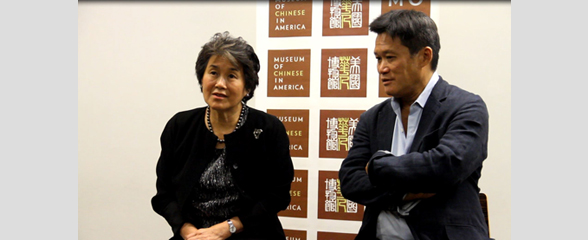Business.

2014.035.003 The Family Journey of The Lee Family
Sandy and Doug Lee sit down with MOCA to discuss the history of their family, as found through archival and family research. They bring up the curio shop that their family kept and finding pictures from this business through a cousin. They discuss the involvement of their father in the U.S. Army and his position as translator for American diplomats who met with Mao and his party. They discuss how their Uncle funded one of the first Chinese-American film companies in the U.S., called Great Wall Films, to challenge American representations of Chinese people in film. They go back to discussing the store on 31 Pell Street, and discuss the beginning and then the history of the store. Their other uncle and their father had insurance and travel businesses in this building as well which still exist today. The businesses in this building grew and changed to adapt to the needs of the growing Chinatown community in San Francisco before the earthquake of 1906. They discuss the impact of the Chinese Exclusion Act on their family, with their relatives having to take long routes to and from China to avoid deportation. The Chinese Exclusion Act was also very isolating for the family, as it prevented them from seeing their other family members back in China. Since their grandmother and grandfather lived in such a dangerous neighborhood at the turn of the century, their grandmother did not go into the street by herself and instead spoke to other women by yelling from fire escape to fire escape. A Church took in their grandmother and taught her American customs and helped with childcare. During the Depression, the family relocated back to Hong Kong with their grandfather staying in Chinatown to run the business. Their father was educated in the U.S. and in Shanghai, which made him valuable as a translator since he knew four dialects of Chinese. Sandy and Doug discuss growing up in Flushing and later Great Neck, Long Island, and their ability to assimilate into American culture. They discuss more family history and then their family’s involvement with MOCA.